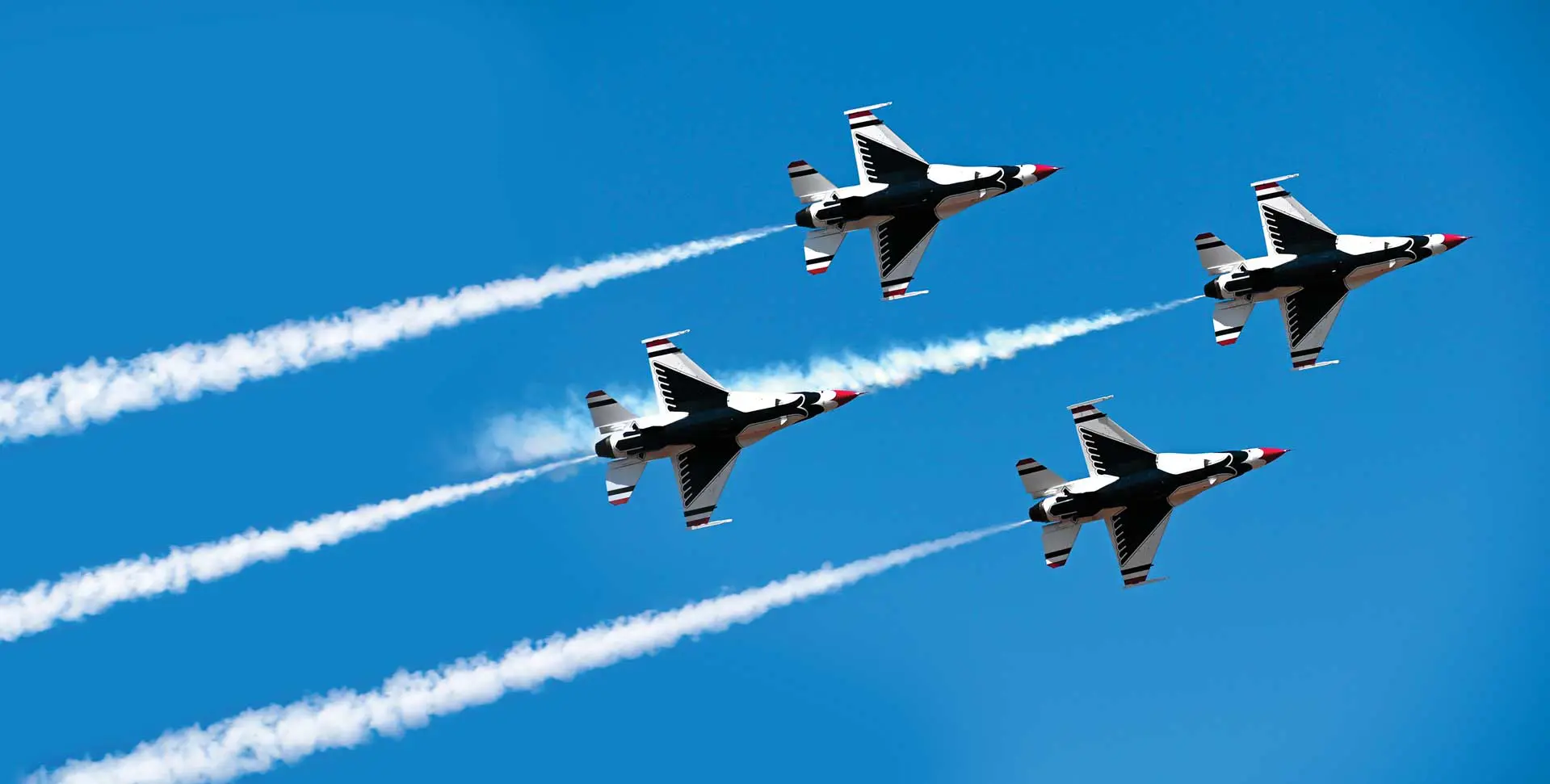Celebrating the 75th Anniversary of the U.S. Air Force
By MS. TIFFANY L. TOLBERT, STAFF WRITER
The U.S. Air Force has accumulated 75 years of proof that there is no limit to what can be achieved.
The U.S. Air Force wasted no time in celebrating its vast achievements, kicking off its 75th anniversary celebrations on Jan. 1, 2022, at the Tournament of Roses Parade and the Rose Bowl Game in Pasadena, CA. There, the U.S. Air Force Total Force Band—made up of 75 active-duty Airmen-Musicians from 14 units—performed, and a B-2 Spirit from the 509th Bomb Wing, Whiteman Air Force Base, MO, and the 131st Bomb Wing, Missouri Air National Guard, roared over the parade, as it has for nearly two decades. However, on this go-around, the flyover initiated a year-long anniversary celebration.
The U.S. Air Force officially became one of the three military departments of the United States on Sept. 18, 1947, when the first Secretary of the Air Force, W. Stuart Symington, was sworn in. It had several predecessors before that point. In 1907, the U.S. Army Signal Corps established an Aeronautical Division to take “charge of all matters pertaining to military ballooning, air machines, and all kindred subjects.†This division also had iterations as the Aviation Section of the U.S. Signal Corps in 1914, the U.S. Army Air Service in 1918, the U.S. Army Air Corps in 1926, and the U.S. Army Air Forces in 1941.
Several individuals are regarded as founders of the Air Force. Of these founders, according to the U.S. Army, Maj Gen William “Billy†Mitchell is considered the “Father of the Air Force.†He served from 1898 to 1925 and advocated for increased airpower. In 1917, he commanded all the aerial units in France during World War I: “At the Battle of St. Mihiel, Mitchell commanded 1,481 American and Allied airplanes. There he demonstrated what airpower could do by massing an assault that sent wave after wave of planes to attack the Germans across battle lines, destroying their ground power.â€1
Another founder is Gen Henry H. Arnold, also known as “Hap,†who designated the framework and created the conditions for an independent Air Force following World War II.
Since then, the U.S. Air Force has played pivotal roles in U.S. military wars, conflicts, and operations—with battlefields no longer confined to land or sea. These operations have included the following:
- Cold War (1947–1989)
- Korean War (1950–1953)
- Vietnam War (1955–1973)
- Operation Eagle Claw (1980)
- Operation El Dorado Canyon (1986)
- Operation Just Cause (1989–1990)
- Gulf War (1990–1991)
- Operation Desert Shield (1990–1991)
- Operation Deliberate Force (1995)
- Operation Desert Fox (1998)
- Operation Allied Force (1999)
- Afghanistan War (2001–2021)
- Iraq War (2003–2011)
Shortly after Sept. 11, 2001, with the start of the war on terrorism, the United States faced its longest war ever—an ongoing conflict against an enemy without traditional borders. The technical expertise, bravery, tenacity, and strength exhibited by Airmen in these operations cemented the U.S. Air Force as the most advanced air force in the world.
The U.S. Air Force also takes part in humanitarian operations, protecting the human dignity of others, saving lives, and alleviating suffering. These operations have included the following:
- Berlin Airlift (1948–49)
- Operation Babylift (1975)
- Operation New Life (1975)
- Operation Provide Comfort (1991)
- Operation Provide Hope (1992)
- Operation Tomodachi (2011)
- Operation Allies Refuge (2021)
Additionally, in August 2005, more than 80,000 Air Force, Air Force Reserve, and Air National Guard personnel carried out Hurricane Katrina relief operations, evacuating nearly 33,000 displaced persons and medical patients and transporting over 11,000 tons of relief supplies.
In 75 years, the U.S. Air Force has made many strides in defending this country’s air, space, and cyberspace.
Strides have also been made internally with equity, diversity, and belonging. There have been many contributions by women and minorities, including by the Tuskegee Airmen, the first Black military aviators in the U.S. Army Air Corps. The Tuskegee Airmen fought in World War II, serving as air pilots, navigators, bombardiers, mechanics, instructors, crew chiefs, nurses, cooks, and other support personnel. The Tuskegee Airmen were awarded the Congressional Gold Medal in 2007 in recognition of their “unique military record, which inspired revolutionary reform in the Armed Forces.â€2
On a related note, SSgt Esther McGowin Blake was the first woman to serve in the U.S. Air Force, enlisting “in the first minute of the first hour of the first day regular Air Force duty was authorized for women on July 8, 1948.â€3 Previously, she had joined the Women’s Army Corps during World War II after her eldest son, a Lieutenant, disappeared while piloting a B-17 Flying Fortress that was shot down over Belgium.
The theme for the Air Force’s 75th anÂniversary celebrations, which started at the January 2022 Rose Bowl and will include events throughout the year, is “Innovate, Accelerate, Thrive—The Air Force at 75.†Various events are schedÂuled around the United States and worldwide to reflect on the history, valÂues, commitments, accomplishments, and capabilities of America’s Total Force Airmen, past and present. Today, nearly 700,000 active-duty, Guard, Reserve, and civilian Airmen remain the heart and soul of the Air Force, the second largest service branch of the U.S. Military. They continue the legacy and mission: “To fight and win—airÂpower anytime, anywhere.â€
Seventy-five years later, and the sky is still never the limit.
1 https://www.army.mil/article/33680
2 https://www.congress.gov/ bill/109th-congress/house-bill/1259/
3 https://www.afspc.af.mil/News/Article-Display/Article/731078/10-Âachievements-from-women-in-the-military/

